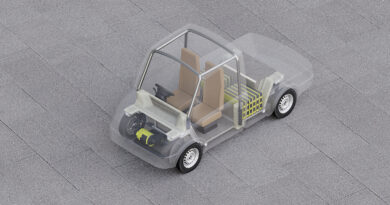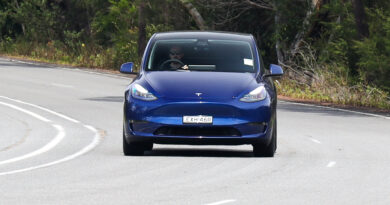2025 BYD Sealion 8 Premium Review: It’s super-fast and handles like a sports car. Does a seven-seat family SUV really need to behave this way?
BYD is opening a new front in its war on, well, everyone else who sells cars in Australia, with the plug-in hybrid Sealion 8.
The key thing here is the third row of seats. This is the first time BYD has sold anything in Australia with the ability to carry up to seven occupants.
Its targets are the soft-roaders that sit in the family SUV segment such as the Toyota Kluger hybrid, Mazda CX-80, Kia Sorento, Hyundai Santa Fe and – kinda, sorta – the updated Mitsubishi Outlander PHEV launching early in 2026.
The Sealion 8, which is known as the Tang L in China, is very current, having only gone on-sale in its home market in April 2025.
Local orders open in December with first deliveries probable the same month. Pricing is as yet unannounced.
Ahead of its launch, EV Central had the chance to drive a Sealion 8 ‘S3’ pre-production vehicle (roughly two steps from what will turn up in local showrooms) briefly at the Lang Lang proving ground in Victoria recently.
We were assured it was very close to what you’ll be able to buy. So without further ado, here’s what we found.
READ MORE: Baby Shark revealed! Australia-bound BYD small ute is based on plug-in Sealion 6, targets ultra-low pricing and an EV range beyond 130km
READ MORE: 2025 BYD Atto 2 Premium Review: Australia’s cheapest compact electric SUV is going to be tough competition for both EVs and ICE … and not just because of the price
READ MORE: 2026 BYD Atto 2 to become Australia’s cheapest electric SUV: $35,000 start price expected, undercutting the Leapmotor B10, Chery E5 and MG S5
2025 BYD Sealion 8 Premium price and equipment
There are going to be three BYD Sealion 8 models. The single e-motor Dynamic front-wheel drive, the dual motor Dynamic all-wheel drive and the flagship dual motor Premium all-wheel drive tested.
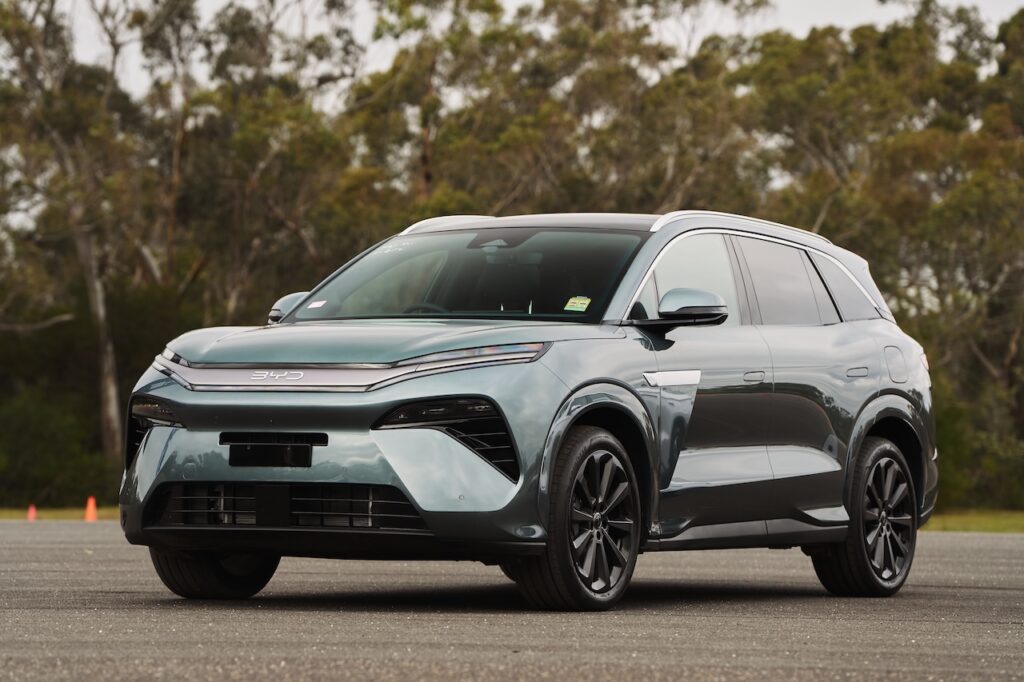
All three vehicles measure up the same at 5040mm long by 1996mm wide by 1760mm tall underpinned by a 2950mm wheelbase.
That’s bigger in every measure than the Kia Sorento, for instance, but it actually looks smaller. Maybe it’s the passenger car styling, whereas Sorento and its ilk prefer a more upright SUV look. Anyhoo…
As mentioned, pricing is a TBA at this point, but somewhere around a $50,000-$55,000 starting point would seem to be reasonable given the positioning of the opposition and BYD’s persistent ability to undercut them.
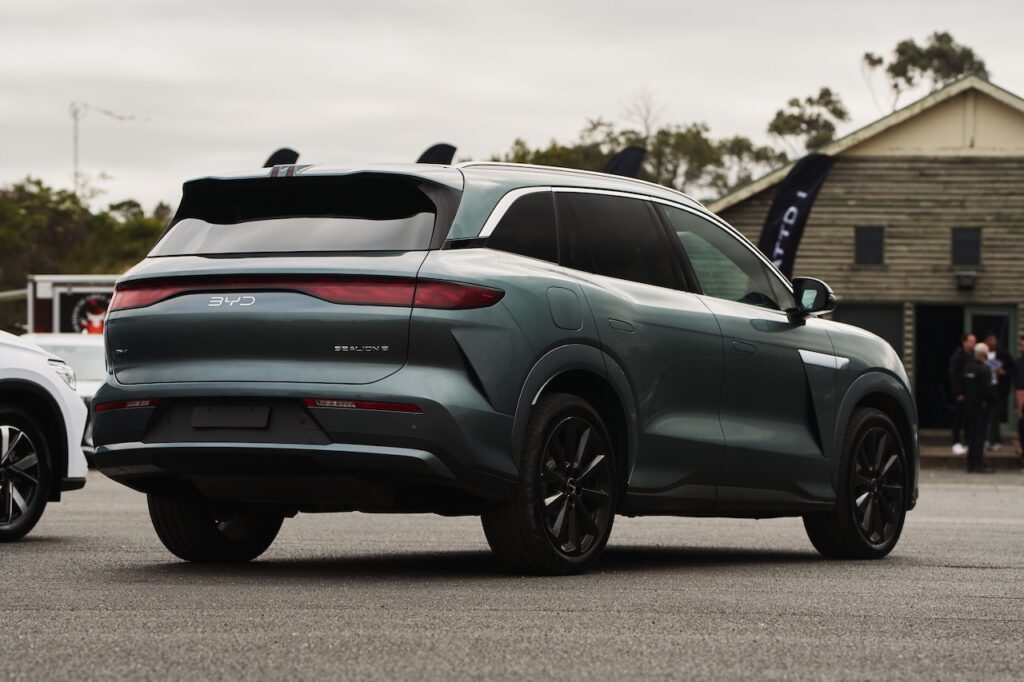
The Dynamic will be the price leader, with its 110kW/220Nm 1.5-litre turbo-petrol engine, 200kW/315Nm e-motor, 19kWh LFP Blade battery, claimed 103kM (NEDC) EV range and 8.6 seconds 0-100km/h time.
Then comes the Dynamic AWD which adds a 200kW/350Nm rear e-motor and swaps to a 35.6kWh battery pack for a 152km claimed range and 4.9 seconds 0-100km/h time.
BYD says the combined range can top 1000km when the 60-litre fuel tank is taken into account.

The Premium boasts the same key numbers but adds more equipment – and price no doubt.
We don’t have a detailed equipment list as yet, but we do know the Premium models will come with 21-inch alloy wheels rolling on 265/45R21 Goodyear rubber, while the Dynamic is on 20s.
Inside there will be a 15.6-inch rotating touchscreen, 10.25-inch digital instrument panel, wireless Apple CarPlay and Android Auto, 21-speaker audio, front and rear-seat massage and adjustment, a 50W wireless phone charger, nine airbags, a 360-degree camera and the usual slew of driver assistants led by autonomous emergency braking.
Our test car came fitted with tri-zone climate control adjustment.
2025 BYD Sealion 8 Premium: What we think
So first off, the BYD Sealion 8 is a pretty decent seven-seater. Climbing in the back is not too hard, especially with the single seat in the middle row folding well away on the footpath side (tick).
Sitting back there is doable for taller people. On long drives, however, it’s still preferable for kids in those circumstances.
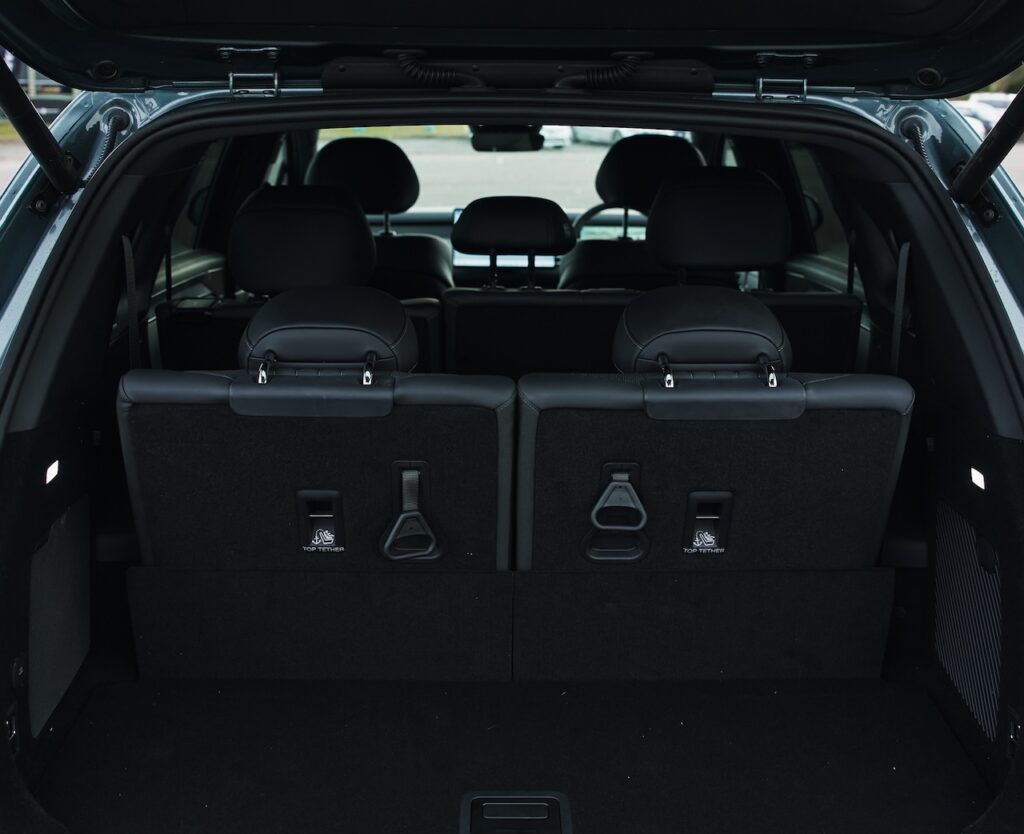
Bottomline though, the Sealion 8 passes the first test against its nominated opposition by being a viable not vestigial seven-seater.
Having child seat tether points in the third row is also handy, allowing for flexibility of where you fit the child seats.
Boot size is also substantial. It starts at 270 litres with all three rows in place, climbs to 960 litres as a five-seater and 1960 litres as a two-seater.
So what’s it like to drive. Well, BYD has thrown a lot of tech and acronyms at this car.
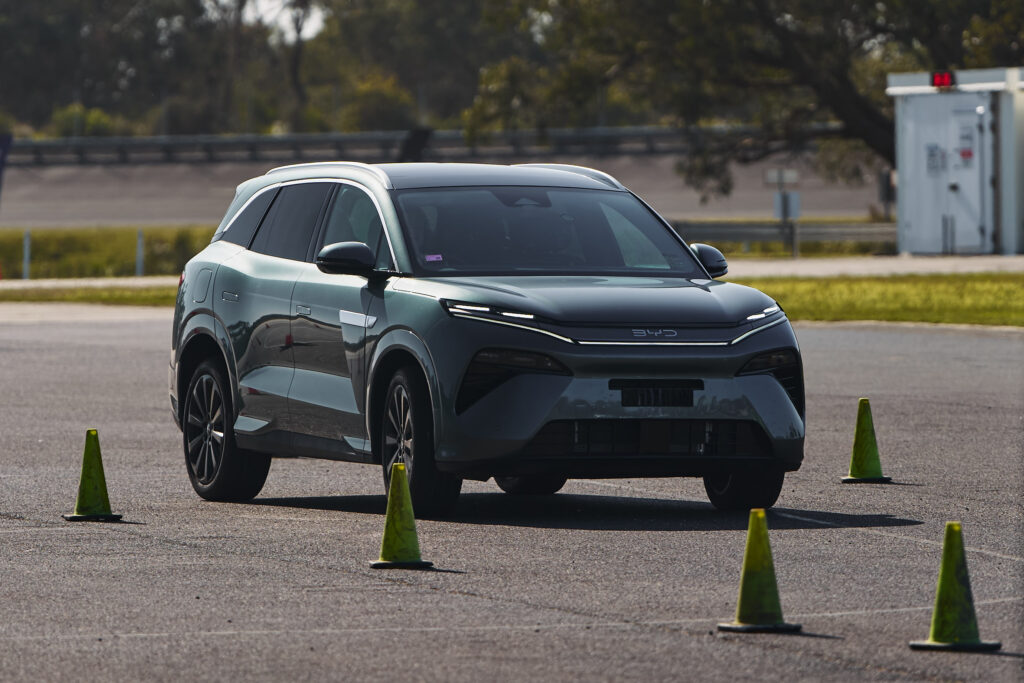
The powertrain is dubbed DM-P, or dual mode powerful, remembering the Shark 6 uses DM-O, or dual mode off-road while the Sealion 6 has DM-I, or dual mode intelligent. The front-wheel drive Sealion 8 is DM-I as well.
So what’s the big deal with DM-P? Apart from its 200kW rear e-motor, it refers to its ability to shut down the rear e-motor when not needed, such as trickling along in thick traffic.
This is the latest fifth generation dual mode tech from BYD. It has a strong focus on power regeneration by concentrating on the front e-motor as most weight is thrown forward in heavy braking.
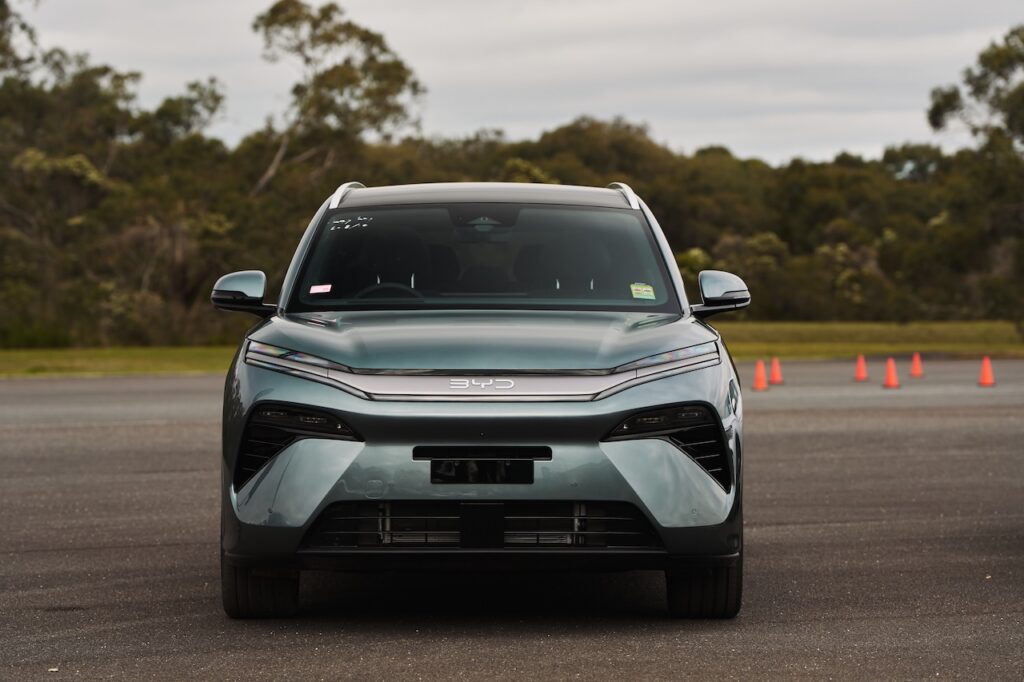
The petrol engine is extremely thermally efficient at 46.06 per cent, which means it puts more of the energy in the fuel into use turning the wheels – in turn using less fuel. One way it achieves that is via a very high 16:1 compression ratio.
The net effect is a blazingly fast vehicle that will put any of its rivals to shame in a straight line test. Step in clean, green, prompt e-motor response topped off by a bit of petrol engine assistance at higher speeds (80km/h and up) puts this thing truly in the performance car class. And it weighs more than 2.2 tonne – at least! – according to Chinese stats.
And bear in mind there’s an 800kW EV version sold in China… jeepers!

More helpful than the Sealion 8’s peak power number is the prompt tip-in throttle for stuff like launching away from lights and dealing with overtaking. Then it’s the e-motors doing the work unless the petrol engine has fired up to act as a generator because the battery is low.
And what about economy. Well, BYD claims fifth gen Dual Mode’s e-motor decoupling contributes to a claimed 1.0L/100km average (Sealion 8 Dynamic claims 1.1L/100km, so pretty close if highly theoretical for both). Electric consumption is not claimed at this point, but on the test car’s trip computer it was averaging 23.9kWh/100km over almost 500km. Fuel consumption was 5.9L/100km.
Of course, keep charge up to the battery and for day-to-driving you won’t use any fuel. That’s the points of PHEVs.

The other big techno feature of the Sealion 8 Performance grades is the DiSus-C continuously adaptive suspension also seen in the Seal Performance EV sedan. This allow adjustments of dampers from softer Comfort to tauter Sport settings. The Dynamic grade gets passive dampers.
Both set-ups work with a combination of front double wishbone and multi-link rear suspension and some level of local suspension tuning.
At Lang Lang the Premium felt compromised by the 21-inch low profile rubber. There was a sharpness to impacts that took the edge off ride comfort, most notably in Sport mode. It also generated some tyre roar. The positive pay-off was nimble handling and steering not really familiar in this class.
From the driver’s seat the Sealion 8 Premium delivers that now-expected BYD combination of quality trims, clean design and seat comfort. The flat bottom steering wheel is familiar, while the gear selector wand emerges from the steering column. Wipers, indicators and headlight adjustments make the left stalk pretty busy. There is a physical volume roller.
Storage is generous as well, with big door bins up-front and smaller ones is row two, a double-level centre console and a well-damped glovebox.
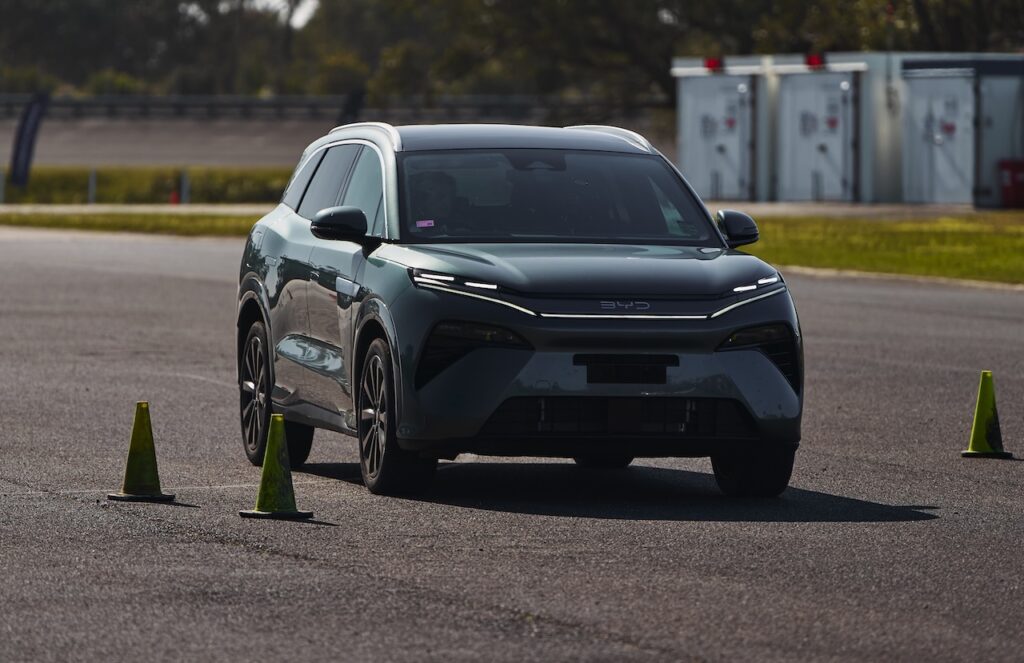
But there’s still too much drilling into the screen to turn off annoying bing-bongs. Sadly, our test car had driver monitoring that couldn’t be switched off. BYD assured is that won’t be a problem for the production cars that go on sale in December.
2025 BYD Sealion 8 Premium: Verdict
There’s lots to like about the BYD Sealion 8 Premium including its generous amount of interior space.
But it also left me scratching my head a bit because of its extreme level of performance.
Does it need all that grunt? And does it need such aggressive suspension set-up and rubber?
All of which suggests the single motor Dynamic with its passive dampers and slightly less aggressive rubber might end up being the cheaper and sweeter spot in this range.
We’ll know more when we get a longer drive of the entire Sealion 8 range.
SCORE: 3.5/5
2025 BYD Sealion 8 Premium specifications
Price: $55,000 plus on-road costs (guesstimate)
Basics: PHEV, 5 seats, 5 doors, SUV, AWD
Range: 152km EV only (NEDC)
Battery capacity: 35.6kWh Lithium-ion
Battery warranty: Eight-years/160,000km (we think)
Energy consumption: 14.8kWh/100km (ADR)
Fuel consumption: 1.0L/100Km Combined (NEDC)
Powertrain: 1.5-litre four-cylinder petrol turbo, 110kW/220Nm
Motors: 1 front, 200kW/315Nm; 1 rear, 200kW/350Nm
Combined output: 359kW
AC charging: 7.4kW, Type 2 plug (China domestic claim)
DC charging: 71kW, CCS plug (China domestic claim)
0-100km/h: 4.9 seconds



